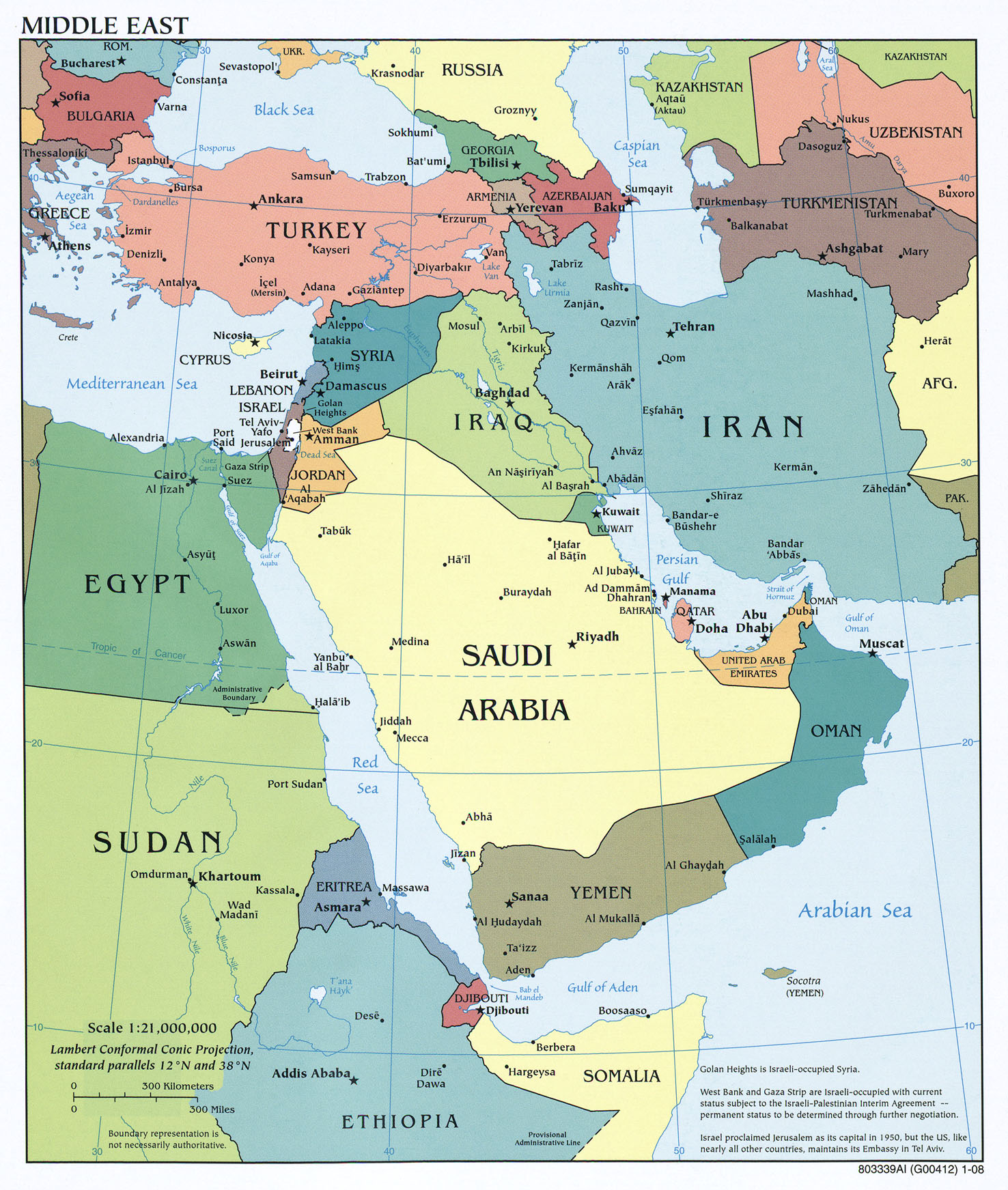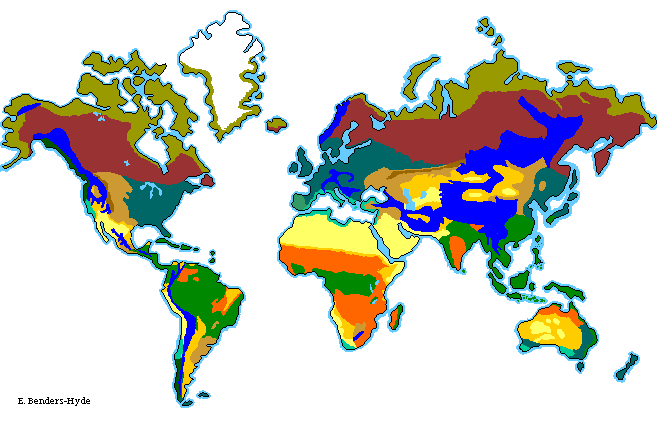We share here a number of the online resources we are sharing with those students, and hope that other EarthView participants will find them as interesting as we do!
We begin with a reference map from the excellent Perry-Castañeda collection at the University of Texas-Austin. This is a great source for definitive maps for class projects, by the way. Even in this collection, however, it is clear that the term "Middle East" does not have a single, consistent definition.
The Guardian UK newspaper has published The Path of Protest -- a timeline of the protests, activities, and political changes in more than a dozen countries of the region since late 2010, when The Arab Spring began in Tunisia. Use it to follow events in any country of the region, or to see how much activity took place in any given week. We learn, for example, that today's presentation is on the first anniversary of a major protest march in the Yemeni capital of Sana'a -- where such events were previously unheard of -- that drew tens of thousands of people into the streets.
 |
| Arab Spring Timeline from the Guardian UK |
We also spoke briefly about the concept of orientalism, as illustrated by the use of Arab images in coffee advertising.
We can examine the geography of the Middle East -- or any other region -- using a dynamic new online atlas called Show World, which includes dynamic cartograms that display the countries of the world whose size is shown in proportion to such variables as population, economic activity, military spending, and even coffee production! Although coffee is called Arabica because it was first cultivated in Arabia, and it is still consumed in the region, almost no coffee is now produced there. This online atlas is full of similar surprises!
We will spend part of our session exploring the new education materials from National Geographic Education.
The web site of the Newseum in Washington, DC is a great source of geographic and linguistic education. Every day, the front pages of more than 700 newspapers -- the "first draft of history" -- are displayed, just as they appear on news stands in thousands of cities throughout the world. Not only can we see what is happening, we can see what editors consider important in different parts of the world, or for different audiences in the same part of the world.
We also viewed a 5,000-year time-lapse map of the empires of the region, which ends with the formation of independent states within the past half-century or so.
As in all parts of the world, religions help to shape the human geography of the Middle East. A time-lapse of the "Big 5" religions helps viewers to understand the Middle East in the context of cultural geography at a global scale.
The physical geography of the Middle East is dominated by its dry climate, which is mainly the result of global circulation patterns that cause high pressure to dominate the region. In areas of high pressure, air is stable or descending, making cloud formation rare. This simple video depicts a simplified model of those patterns on the Western Hemisphere, but correctly indicates the factors that dominate climate in the Middle East.
The resultant climate is reflected in the desert and grassland biomes of the region.







No comments:
Post a Comment